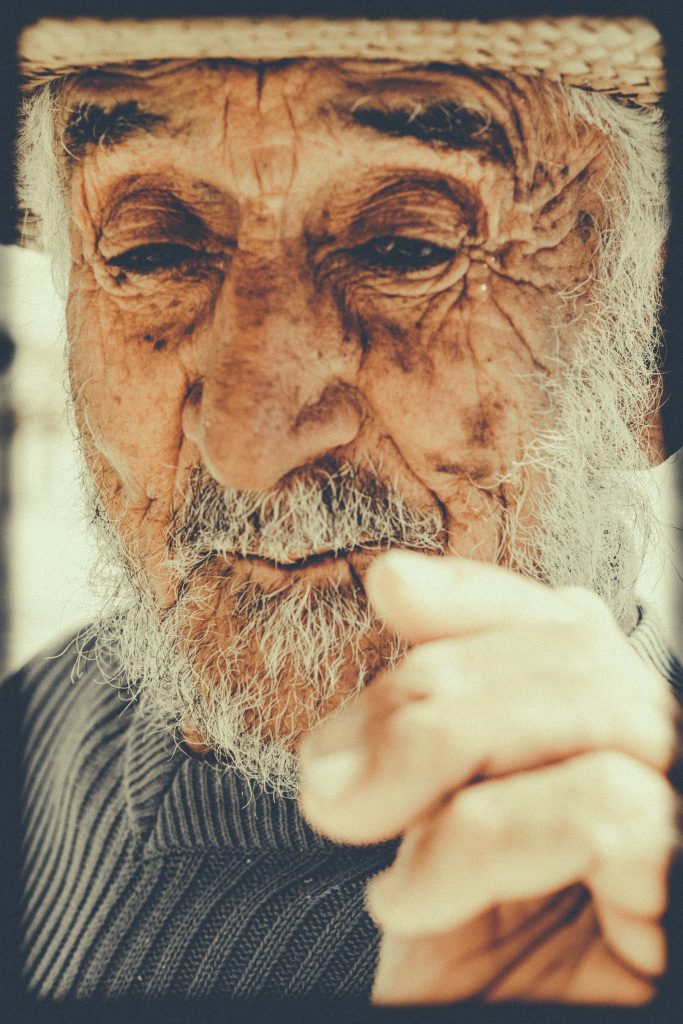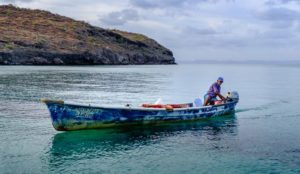by Bryan Jauregui, Todos Santos Eco Adventures. This article was originally published in Janice Kinne’s Journal del Pacifico.
This is not a fish tale. It’s an immigrant story any American could tell. “In 1860 my great grandfather Esteban Puppo arrived in Cabo San Lucas from Genoa, Italy. He brought money and a son with him and purchased a hacienda in Caduaño, near Miraflores. He raised cattle and built a good life. His son Santiago grew up, married a beautiful woman from the coast and had my father, Pedro Puppo, in 1889. But it was a troubled time in Mexico and the government took away the hacienda, so Pedro went to La Ribera where he opened a general store. There he met and married a young shop attendant, Seferina Marrón. They moved to La Paz in 1910 where my brother Santiago was born in 1929 and I was born in 1939. My father became a fisherman, as did my brother and I. Santiago has been fishing the waters of Isla Espiritu Santo and La Paz for 80 years. My father would be sad to know that we are the last independent fishermen of Isla Espiritu Santo.”

Mario Puppo Marrón, the younger of the two famed Puppo brothers, tells his family story with humor, passion and a keen understanding that his family history is the history of Isla Espiritu Santo and the fishing industry in La Paz. When his father Pedro became a fisherman in 1910, he and his colleagues would row or sail their boats – crafts that were more like canoes than pangas – to Espiritu Santo, often taking two days or more to reach their destination. That trip now takes less than an hour by motorboat. They would stay on the island for months, camping wherever they liked, salting the fish they caught to keep it from rotting. They could sell the salted fish for 1.5 pesos per kilo (4 pesos per kilo for shark) and in two months they could make 1,000 pesos. In those days the pesos were silver and living was cheap, so 1,000 pesos was a lot of money. It had to be to motivate the fishermen to endure months on the island.
Recalls Mario. “I was 10 years old when I started working with my father on Isla Espiritu Santo. There is very little fresh water on the island and the water from home was sent in cans so it rusted quickly. Therefore almost every day we would eat tortillas, fish machaca, and turtle. We would have vegetables for the first few days after arriving on the island, then nothing for the remaining weeks or months. We couldn’t make beans because there was no water to cook them. Our only “spices” were onions and chiles. It was exciting when we were able to catch one of the wild goats on the island for the pot.”
When Mario’s father Pedro started fishing in 1910, an entrepreneur and local politician named Gaston Vives had a concession in San Gabriel Bay on Espiritu Santo for cultivating pearls. It was a substantial operation that included homes, offices and a 500-meter-long dike which turned the bay into a lagoon. There he created a massive system of 36 roofed canals through which he steered the waters of the Sea of Cortez to supply the necessary nutrients and oxygen to his oyster beds. He was wildly successful, selling his cultivated pearls throughout the US and Europe. Mario’s father, who sometimes dove for pearls, saw a different side of the operation. “The workers recruited for the pearl operation at San Gabriel Bay were all people from the bottom of society with no families, no one asking after them. They were forced to work naked so they couldn’t steal the pearls. But as they were only paid 20 pesos a month, the temptation was too great and many of them would swallow the pearls in an attempt to smuggle them out of the bay. These workers suffered a great deal and many of them died and were buried on the island. Until the 1960s and 1970s when Americans arrived and started taking away the bones, there were lots of crosses in the dunes of the island. Many of the beaches still have the shells from this operation, which was destroyed in 1914 by an enemy of Gaston Vives.” Today Isla Espiritu Santo is a national park with no permanent structures, and only the ruins of the dike remain of the Vives empire.

The Puppo brothers’ father fished with spears and handlines using hooks made by blacksmiths, as did Mario and Santiago when they were old enough to join him in the sea. The 1920s, 30s, 40s and 50s were bounteous years for fishermen in the Sea of Cortez. Recalls Mario. “There was so much great fishing. We would often spear 100-kilo groupers and of course they were too big to take into the boat so we would just keep them alive in the water next to the boat and take them straight to the Hotel Perla on the Malecon in La Paz where they always bought all we could catch. The owners there really valued the fishermen and not only would they pay us, but they always fed us well too. Of course, it’s been well over 20 years since I’ve seen a fish that big around Espiritu Santo.”
Fishing techniques changed through the decades. “From 1945 to 1970 the fishermen of La Paz began using dynamite to fish, and of course that was extremely dangerous” says Mario. “The dynamite was unstable and many fishermen ended up blowing themselves up along with the fish.” That was not the only threat for the fishermen. In the old days the fishermen didn’t have a way to track the weather and many died in hurricanes. In 1976 Mario rode out Hurricane Lisa, the worst recorded storm in the history of Baja California Sur, in a cave on Isla Espiritu Santo with his wife, 3-year old daughter, and dozens of snakes who were also seeking refuge. While Mario laments many of the changes that have affected fishermen at Isla Espiritu Santo, accurate weather prediction technology is not one of them.
In 1977 Isla Espiritu Santo and 897 other islands of the Sea of Cortez were designated a Flora and Fauna Protection Area (Zona de Reserva Natural y Refugio de Aves Migratorias y de la Fauna Silvestre) and in 2005 a UNESCO World Heritage Site. Conservation became the driving force and where once Mario and Santiago had camped wherever they liked on the island, in 2007 they were restricted to one piece of land on the back side of Gallo Bay where they keep their fishing shack and, at 81 and 91 years of age, continue to fish the waters of Isla Espiritu Santo. While nylon fishing nets have been in use around the island since the 1970s, Mario and Santiago command a premium for fish caught with hand lines so that is generally how they ply their trade. But they are the end of the line.
“Fishing at the island as we know it is over. Once Santiago and I are gone, there will be no more permits for fishermen like us. Now only cooperatives are able to get fishing permits. And that would be OK if the system was effective, but fishermen from outside of La Paz come in the night to fish our waters and nothing is done to stop it. We are sad to see this happen.”
Mario has been married to Rosa Maria Murillo Martinez for 56 years. Together they have 5 children, 9 grandchildren and 6 great grandchildren. One of their daughters married an Italian immigrant, and Mario loves that the family story has come full circle. While it is the end of the story for the independent fishermen of Isla Espiritu Santo, the American story of immigration, integration and intrepid determination continues to thrive in Baja California Sur. It’s a tale for the ages.
© Copyright Sergio and Bryan Jauregui, Casa Payaso S de RL de CV, 2020
